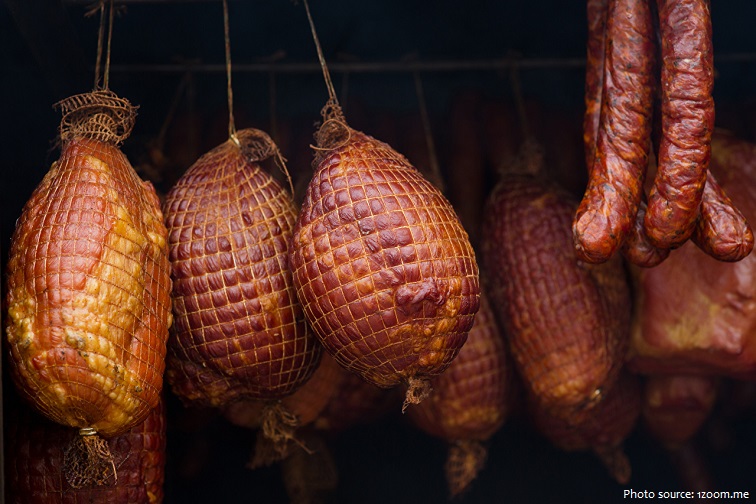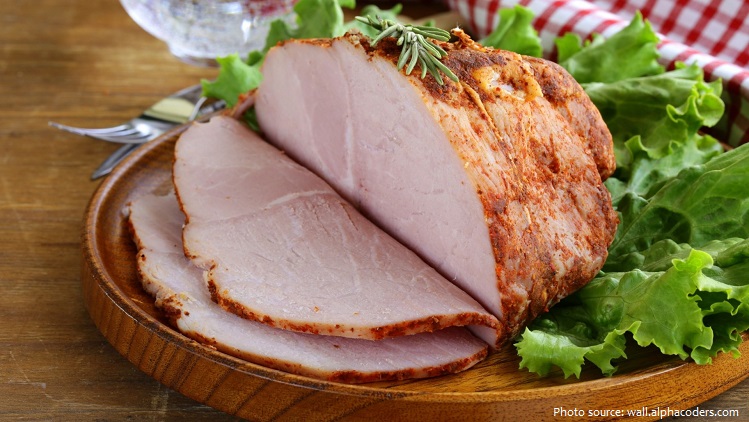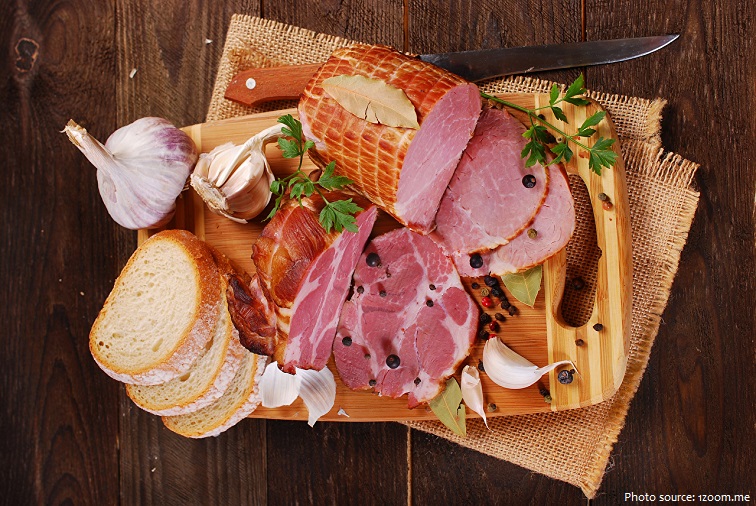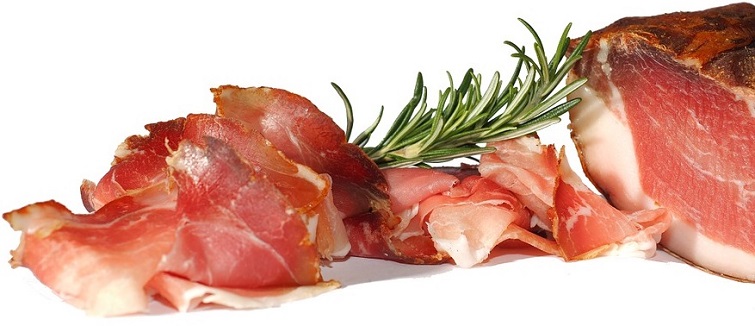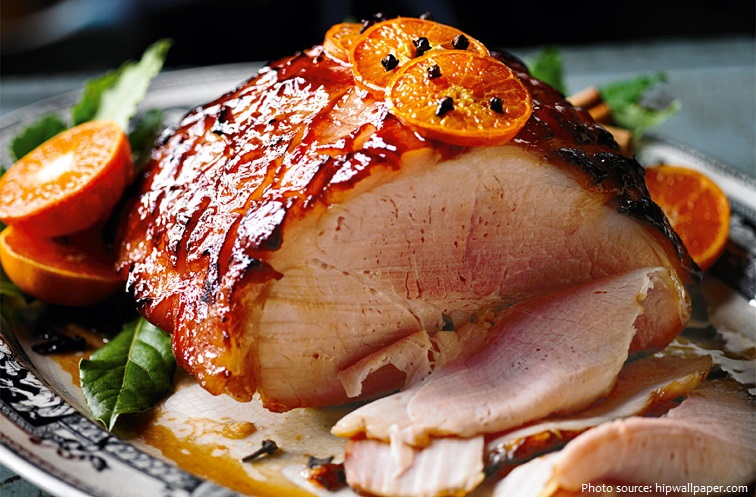Ham is pork meat that comes from a thigh of a pig.
It is produced by curing raw pork by salting, also known as dry curing, or brining, also known as wet curing.
The curing process both preserves the meat allowing it to be stored, or brought on travels for later consumption, as well as giving it additional flavor.
Besides salt, several ingredients may be used to obtain flavoring and preservation, from black pepper to saffron.
Ham can also be additionally preserved through smoking, in which the meat is placed in a smokehouse (or equivalent) to be cured by the action of smoke.
It is one of the most consumed pork products in the world.
Ham was one of the most ancient meats of civilized peoples and was common throughout Europe and Asia except where forbidden by religious edict.
There are claims that the Chinese were the first people to mention the production of cured ham. According to some sources curing the first pork leg dating back in 4900 B.C. China.
Larousse Gastronomique claims an origin from Gaul. It was certainly well established by the Roman period, as evidenced by an import trade from Gaul mentioned by Marcus Terentius Varro in his writings.
Cato the Elder writing about the “salting of hams” in his De Agri Cultura tome around 160 BC.
The word “ham” is derived from the Old English ham or hom meaning the hollow or bend of the knee, from a Germanic base where it meant “crooked”. It gained the meaning of the leg of an animal around the 15th century.
Introduced to the American continents by the first European settlers, it became a favoured food on the farms of North America, where home curing of hams became an elaborate tradition of the late fall and winter months. Losses through putrefaction were high, however, and product quality varied greatly.
Today, ham is produced around the world, with regional variations on the method.
Prosciutto is an Italian dry-cured ham that is usually thinly sliced and served uncooked; this style is called prosciutto crudo in Italian (or simply crudo).
Jamón is a dry-cured ham and one of the most well known foods of Spanish cuisine.
Njeguški pršut is a dry-cured ham served uncooked, similar to Italian prosciutto; it is a specialty of Njeguši, a village in Montenegro.
Anfu ham is an ancient dry-cured ham from Anfu, Jiangxi, China. It is eaten alone and also used as an ingredient to add flavor to various dishes. Anfu is famous for ham.
Country ham is a variety of heavily salted ham preserved by curing and smoking, associated with the cuisine of the Southern United States.
In the United States, mass-produced supermarket hams are often called – city hams.
A Christmas Ham or Yule Ham is a traditional dish associated with modern Christmas, Yule, and Scandinavian Jul.
The ham sandwich is the 2nd most popular sandwich in America (after the turkey sandwich).
George A. Hormel & Company pioneered canned ham in America in 1926, then introduced Spam in 1937 as a luncheon meat.
The most expensive leg of ham commercially available is an Iberian “Manchado de Jabugo” retailing at €4,100 ($4,620.28) and is sold by Dehesa Maladúa (Spain) as of 20 March 2016. The pigs from which the ham is made are reared for three years, the legs of ham are then cured in a traditional curing cellar for up to six years.
Ham is an outstanding source of thiamine (vitamin B1), iron, riboflavin, niacin, phosphorus, and calcium.
A 100-gram (3.5-ounce) serving of ham contains about 145 calories.

